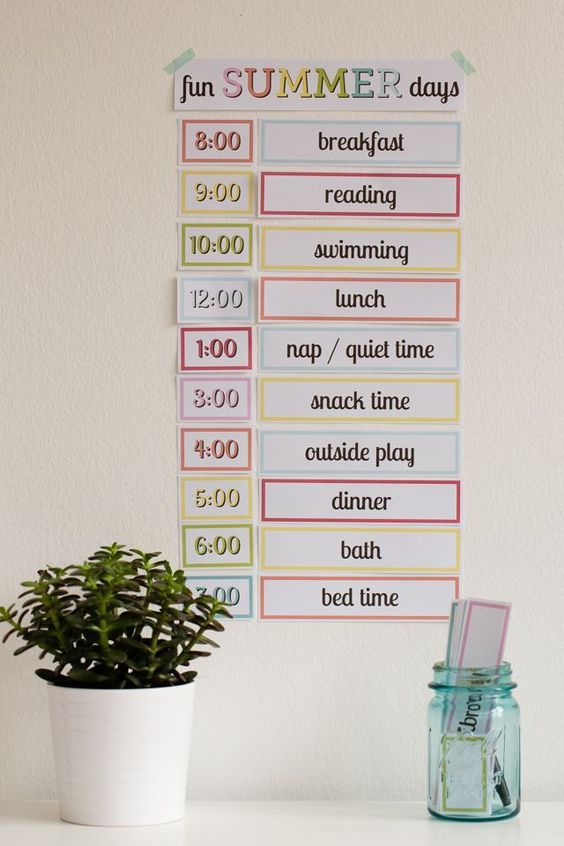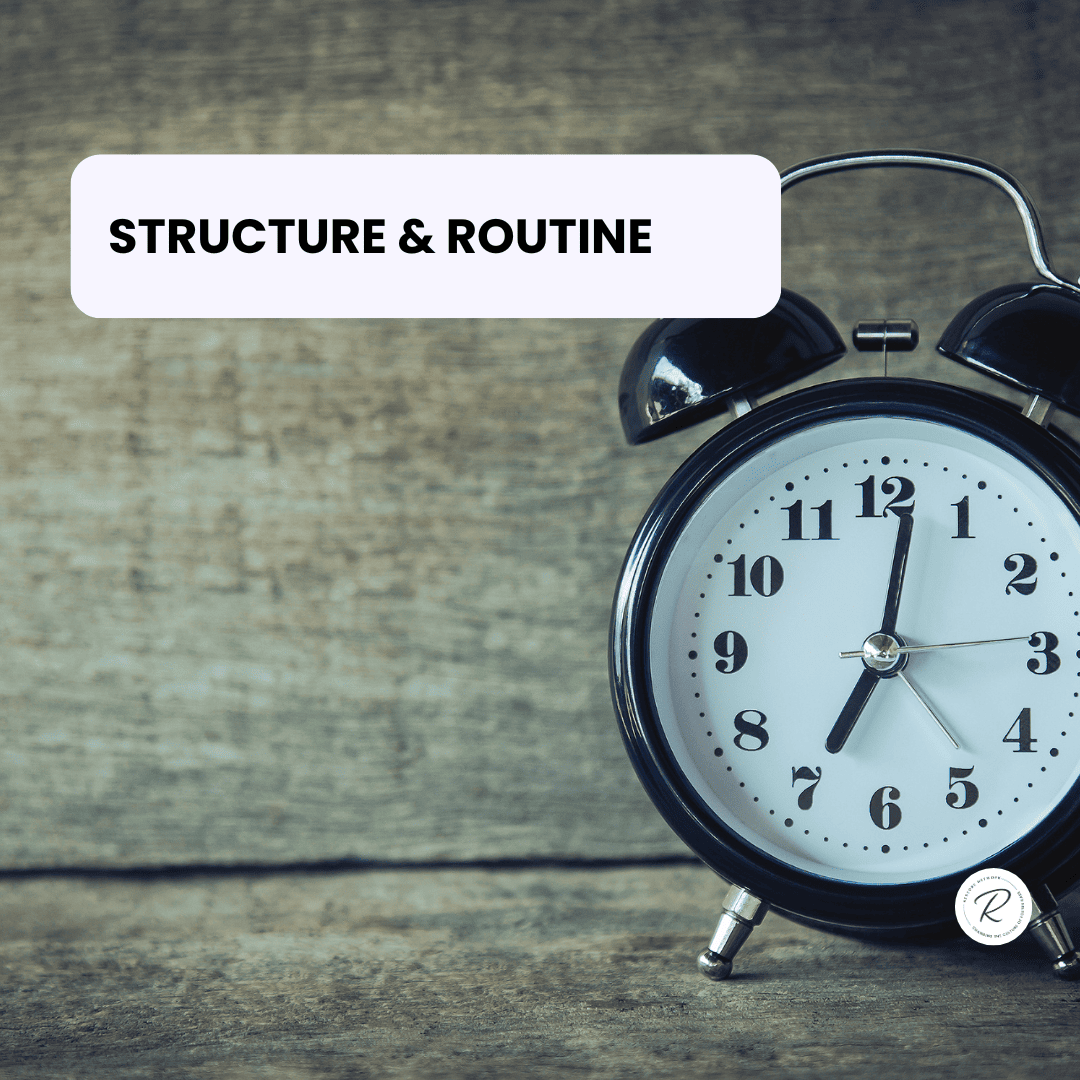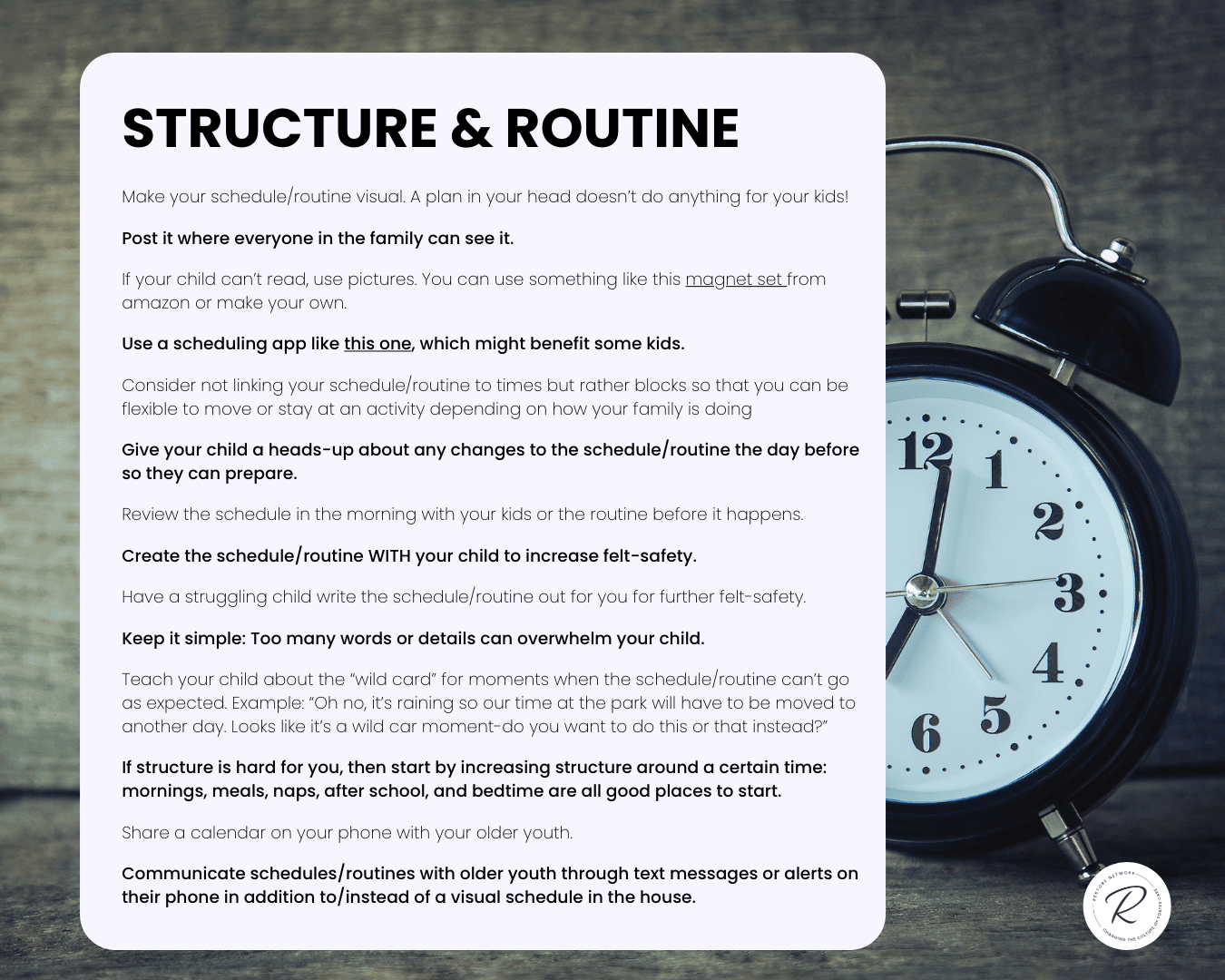by Ashley Bennett, Director of Trauma-Informed Care
Ok, ok. Some of you took a look at this photo above and your heart skipped a beat because you love a good schedule and routine!
Others of you, not so much. You love the spontaneity of doing what you want when you want it, and you prefer a “go with the flow” attitude. I get it!
Regardless of your preference, I bet most parents would agree that having some structure to your day-some predictable rhythms-are beneficial in helping you stay on task, feeling “in control,” and bringing some order to your chaos!
It makes sense then, don’t you think, that structure would have these same benefits for our children? Structure and routines are actually a good thing for all children. Children in general have trouble with unstructured time, take school for instance—most behavior challenges occur in hallways, on the bus, and at recess and lunch because those are less structured times. But for our children who experienced unpredictable and harmful events in their childhoods, we know that a home environment with higher structure is most beneficial, especially at the beginning when a child is learning to trust, learning to feel safe, beginning to heal.
If you have a child in your home who struggles to find something to do when he has down time, asks a ton of questions about who/what/when during your day, uses his free time to annoy a sibling, or even gets aggressive during free time or during times of transition, you likely have a child who needs a higher level of structure to his day and providing him with this will likely see the behaviors decrease.
Ok, so again, I am not saying you live your days with a schedule like the one in the above photo, BUT we can give our children the gift of predictability by having a general rhythm to our family’s days and by providing higher structure around moments in our days that maybe in the past have caused more challenges.
For example, maybe after school is always a hard transition for your family so you’re going to choose to create with your children a really specific after school routine that involves movement, a snack, and an activity with you. Just focus on making that period of time every day predictable and then see how your children do.
Knowing what comes next usually helps our children feel less anxious and more in control which calms their fear responses and helps them handle transitions better. For example, if your child knows that homework time follows outside play time every afternoon after school, he is more likely to accept that it’s time to come in when you tell him to. As opposed to you just choosing a random time to call him inside every day and say it’s time for homework. Right? Cue the meltdown and frustration.
Regardless of where you sit on the structure-spontaneity spectrum, the child you welcomed into your home likely has different needs than you or your biological children, and a higher level of structure might be required for awhile.
See below for some co-regulating tips on how you can provide more structure for your child.

*Structure is one of the Empowering Principles of Trust Based Relational Intervention (TBRI®). TBRI® is an attachment-based, trauma-informed intervention that is designed to meet the complex needs of vulnerable children. TBRI® uses Empowering Principles to address physical needs, Connecting Principles for attachment needs, and Correcting Principles to disarm fear-based behaviors. Learn more about TBRI® here: https://child.tcu.edu/

